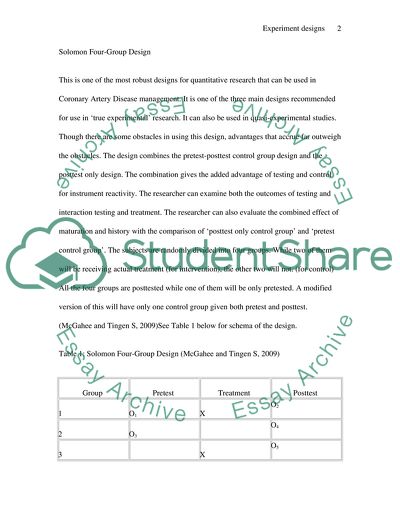Cite this document
(Two Experimental Designs Applied in the Management Coronary Artery Research Paper Example | Topics and Well Written Essays - 1250 words, n.d.)
Two Experimental Designs Applied in the Management Coronary Artery Research Paper Example | Topics and Well Written Essays - 1250 words. https://studentshare.org/statistics/1723190-design-paper
Two Experimental Designs Applied in the Management Coronary Artery Research Paper Example | Topics and Well Written Essays - 1250 words. https://studentshare.org/statistics/1723190-design-paper
(Two Experimental Designs Applied in the Management Coronary Artery Research Paper Example | Topics and Well Written Essays - 1250 Words)
Two Experimental Designs Applied in the Management Coronary Artery Research Paper Example | Topics and Well Written Essays - 1250 Words. https://studentshare.org/statistics/1723190-design-paper.
Two Experimental Designs Applied in the Management Coronary Artery Research Paper Example | Topics and Well Written Essays - 1250 Words. https://studentshare.org/statistics/1723190-design-paper.
“Two Experimental Designs Applied in the Management Coronary Artery Research Paper Example | Topics and Well Written Essays - 1250 Words”. https://studentshare.org/statistics/1723190-design-paper.


